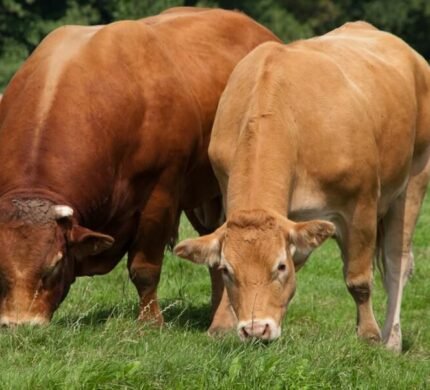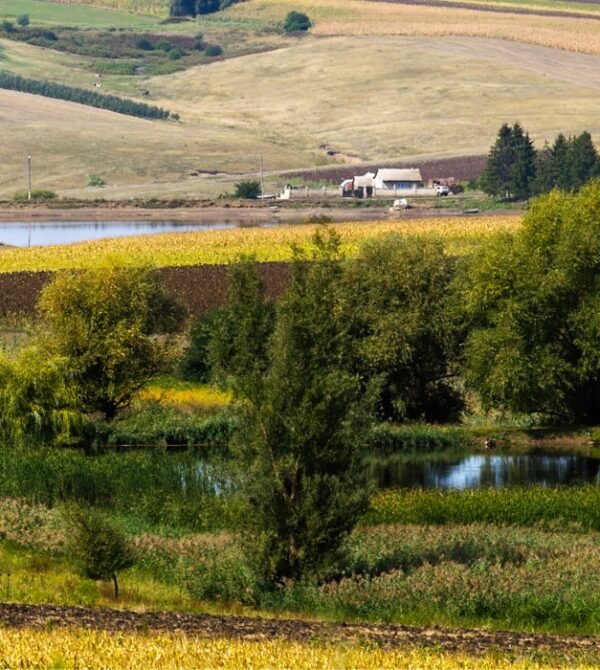Limousin Cattle
- Temperature:100.4°F to 102.8°F
- Milk:4-8 liters of milk per day
- Food:Grasses, Legumes and Vegetation
- Pregnancy:Around 280-290 days
- Nationality:France

General Information
Limousin cattle were first developed in the Limousin region of France, where they were used primarily as draft animals and for their meat.
Limousin cattle are typically red or golden in color with a lighter-colored muzzle, eyes, and hooves. They are known for their muscular build and are often referred to as “the butchers’ breed” because of their high meat yield.
Limousin cattle are one of the most popular beef breeds in the world, and are raised in many different countries and regions. They are known for their excellent growth rate and feed conversion, making them a popular choice among livestock producers.
Where we find this cow to buy?
You can find Limousin cattle for sale from a variety of sources, including livestock auctions, breeders, and online marketplaces. Here are some places to look for Limousin cattle for sale:
01. Local livestock auctions : Check with your local livestock auction or sale barn to see if they have any Limousin cattle available for purchase. This can be a good option if you want to buy cattle locally and inspect them in person before making a purchase.02. Breeders : There are many Limousin breeders and associations that specialize in breeding and selling Limousin cattle. You can search online for breeders in your area or contact a Limousin association for a list of breeders.03. Online Marketplaces : There are several online marketplaces that specialize in buying and selling livestock, including Limousin cattle. These marketplaces can allow you to view and compare cattle for sale from a variety of breeders and locations, making it easier to find the right cattle for your needs.
It is important to do your research and select a reputable breeder or seller when buying Limousin cattle or any other livestock. This can help ensure that you are getting high-quality, healthy animals that are well-suited to your needs and production system.

How to increase milk production in Limousin Cattle
While Limousin cattle are primarily a beef breed, they can still produce milk, and there are several things you can do to increase milk production in these cattle. Here are some tips for increasing milk production in Limousin cattle:
01
Milk your cows at least twice per day for maximum milk production, preferably at the same times each day.
02
Creating a calm and comfortable milking environment can help cows release their milk more easily, helping to maximize milk production.
03
The genetics of your Limousin cows can also play a role in milk production. Select cows with high milk production potential and work with a reputable breeder to ensure that you are getting animals with good genetics for milk production.
04
Keep your cows healthy by providing regular veterinary care, including vaccinations and preventative treatments for common diseases. Sick cows will produce less milk, so keeping your cows healthy is key to maximizing milk production.
Medicine
Here is a list of medicinal uses and applications of Limousin cattle:
01
AnthelminticsAnthelmintics are medications used to treat and prevent parasitic infections in cattle.
02
Anti-inflammatory MedicationsNSAIDs are used to treat pain and inflammation in cattle.
03
VaccinesVaccines are essential for Limousin cattle to prevent and control diseases.
04
Wound CareClean and dress wounds to prevent infection and promote healing.
Pregnancy
Limousin cows can be bred using natural breeding, artificial insemination (AI), or embryo transfer (ET). AI and ET can be used to introduce new genetics into your herd and help you to select for desired traits. When breeding, it is important to ensure that the cow is in good health, has a body condition score of at least 3, and is in the appropriate stage of her estrous cycle.
Limousin cows typically calve without difficulty, but it is important to monitor the cow closely during calving and be prepared to intervene if necessary. Calving difficulty can lead to calf loss or injury to the cow, so it is important to be prepared with the appropriate equipment and knowledge to assist in a timely manner if necessary.
Proper nutrition is important during pregnancy to ensure that the cow and her developing calf are healthy. Limousin cows should have access to high-quality forage and supplemental feed to meet their energy and protein requirements during pregnancy.
During pregnancy, it is important to monitor the cow’s health and provide any necessary medical treatment. Your veterinarian may recommend vaccines or preventative treatments to help prevent disease and ensure that the cow and her calf are healthy.
Import!
By properly managing pregnancy in your Limousin cows, you can help ensure that your cows and their calves are healthy and productive. Working with a veterinarian and following best management practices can help you to maximize reproductive efficiency and improve the overall performance of your herd.
Food
The diet of Limousin cattle can vary depending on factors such as their age, size, and stage of production (such as breeding, growing, or finishing). However, some common foods that are fed to Limousin cattle include:
Limousin cattle are primarily raised on pasture and graze on a variety of grasses and forages, including timothy, orchard grass, clover, and alfalfa.
To support muscle growth and development, Limousin cattle may also be fed protein supplements, such as soybean meal or canola meal.
Silage is a fermented feed made from chopped forage stored in airtight conditions for cattle during the winter or when pasture is limited.
Limousin cattle may be fed supplemental grains such as corn, wheat, or barley to help them gain weight and build muscle.
During the winter or in areas with limited pasture, Limousin cattle may be fed hay, which is dried and stored grass or legumes.
Cattle need a balanced diet of essential nutrients, such as minerals, through mineral supplements and feed mixes.
Facts
Here are some interesting facts about Limousin cattle:
Limousin cattle are known for their muscular build and lean meat, making them popular in the beef industry.
They are often used in crossbreeding programs to improve the meat quality and efficiency of other beef cattle breeds.
Limousin cattle have spread to many countries, including the US, Canada, and Australia.
The breed has a long history, with records of the Limousin cattle dating back to the 18th century.
They have a distinct golden-red coat, which can range from light wheat to dark copper.
The breed is relatively low-maintenance, with good resistance to many common cattle diseases.
Limousin cattle are efficient at converting feed into meat, making them economical.
Carcass yield is high due to its high carcass yield, converting live weight into usable meat.